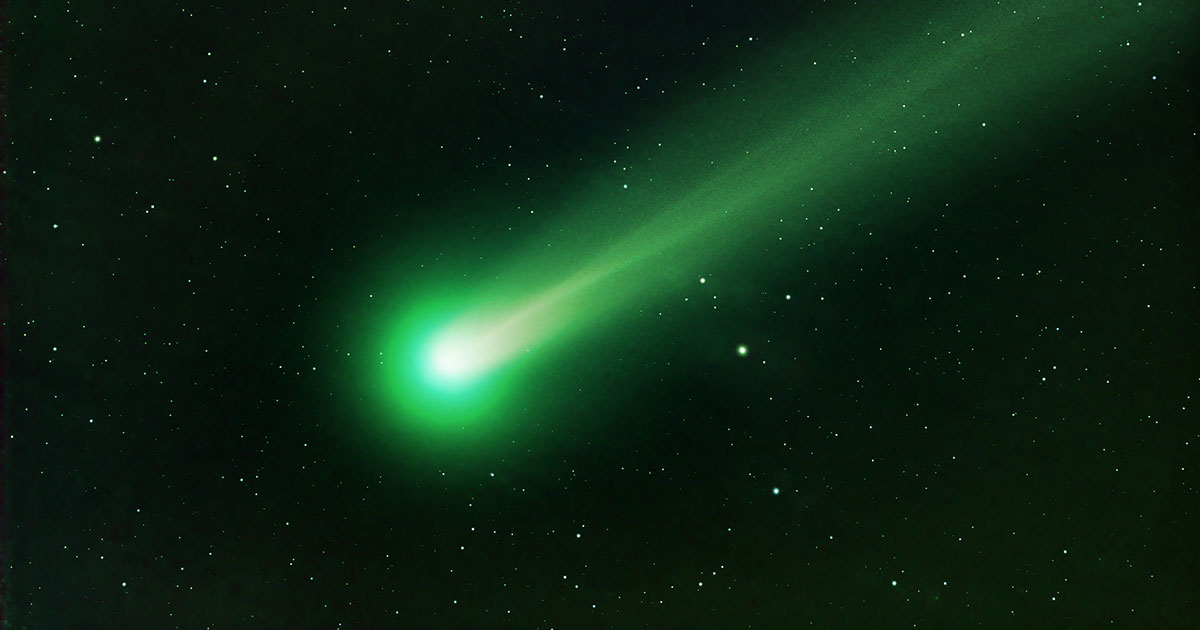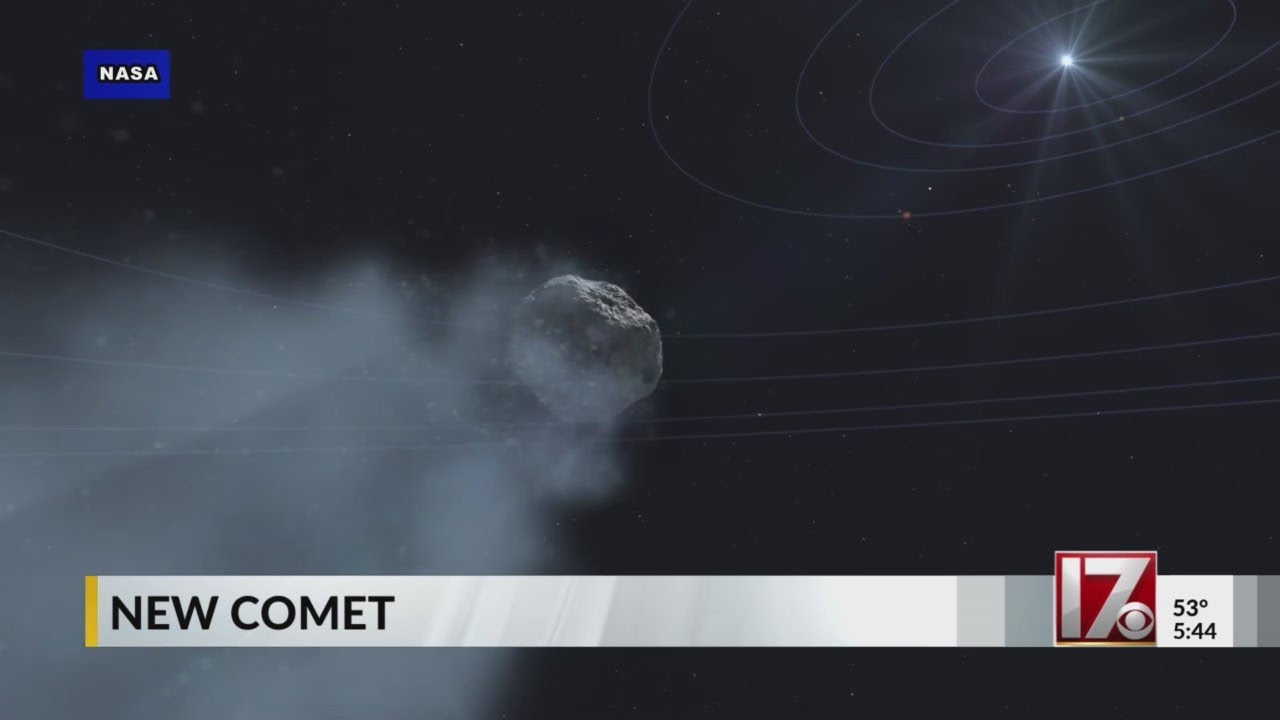NASA Expects First Green Comet On Jan 12
When we were kids, we often went outside at night to look for shooting stars. Here is the good news: NASA expects first green comet on Jan 12. Scientists believed that this rare comet appeared 50,000 years ago.
Author:Suleman ShahReviewer:Han JuJan 11, 20230 Shares159 Views

When we were kids, we often went outside at night to look for shooting stars.Here is the good news: NASA expects first green comet on Jan 12. Scientists believed that this rare comet appeared 50,000 years ago.
The National Aeronautics and Space Administration (NASA) claims that comets are frozen remnants of the solar system's origin, made of ice, rock, and dust. They can be several miles to tens of miles across, but when they approach the Sun, they heat up and release gases and dust into a luminous head that can be as big as a planet, and its tail can be spread out over millions of kilometers.
The comet was noticed on March 2, 2022, when astronomers at the Palomar Observatory in San Diego County, California, used the Zwicky Transient Facility's wide-field survey camera. Tomorrow, the comet will be closest to the sun.
The Planetary Society says that the comet, which has the name C/2022 E3 (ZTF), circles the sun in a way that makes it through the farthest parts of the solar system. This is why it has taken so long to swing by Earth again. On January 12, skywatchers in the Northern Hemisphere can view it by pointing telescopes or binoculars toward the low northeastern horizon shortly before midnight.
Furthermore, the icy celestial object, which has been getting brighter as it gets closer to the sun, will make its closest pass of Earth between February 1 and February 2, about 26 million miles (42 million kilometers) away, according to EarthSky. As the comet gets closer to Earth, people will be able to see it near the bright star Polaris, also known as the North Star, and they will be able to see it earlier in the evening.
A Newly Found Rare Green Comet Spotted

Newly discovered comet visible for first time in 50,000 years
Where Do Comets Come From?
People have seen comets for thousands of years. Scientists have found, though, that a comet may only last a few thousand years because it loses material every time it comes close to the Sun. This is a small number compared to the age of the solar system. So, scientists have come to the conclusion that if there are still comets in the Solar System today, there must be a place in the Solar System where comets grow up.
Otherwise, all of the comets would have died long ago. Also, since we have found almost all of the objects in the inner Solar System, this pool of new comets can only be in the outer Solar System.
In the second half of the twentieth century, observations of comet orbits gave evidence that two distinct regions of the outer Solar System are responsible for comet formation. The Kuiper Belt, a ring of frozen bodies immediately beyond Neptune's orbit, is the first of these zones. Comets that come from this area have short orbital periods and move around the Sun in a plane similar to that of the planets.
The second place of origin of comets is known as the Oort Cloud. It is a huge, spherical cloud that wraps around the solar system and is about 3 light years, or 30 trillion kilometers, from the sun.
Comets from this region have much longer orbital times than those from the Kuiper Belt. Also, the plane of orbit for comets in the Oort Cloud may be very tilted compared to the plane of orbit for planets. Current theories say that if a comet comes from one of these places, it could change its orbit by colliding with another comet or by being pulled in a different direction by the gravity of an object from another star system that is close by in the outer Solar System.
Final Words
According to NASA, morning skywatchers in the Northern Hemisphere should be able to see the comet using binoculars during most of January, while those in the Southern Hemisphere won't be able to see it until early February. If C/2022 E3 (ZTF) continues to brighten as predicted, it may be visible to the naked eye in dark skies by the end of January.
The comet's streaking tails of dust and charged particles, as well as the brilliant green coma that surrounds it, can be used to distinguish it from stars. As a comet approaches the sun, a coma builds around it, causing its ice to sublimate, or transform instantly into gas. When viewed through a telescope, the comet appears hazy as a result.
If you missed the information on where to observe this unusual green comet, the Virtual Telescope Project will be streaming perihelion and perigee livestreams on their website and YouTube channel. Aphelion is the farthest point of the Earth's orbit from the Sun. Perihelion is the closest point of the Earth's orbit to the Sun.

Suleman Shah
Author
Suleman Shah is a researcher and freelance writer. As a researcher, he has worked with MNS University of Agriculture, Multan (Pakistan) and Texas A & M University (USA). He regularly writes science articles and blogs for science news website immersse.com and open access publishers OA Publishing London and Scientific Times. He loves to keep himself updated on scientific developments and convert these developments into everyday language to update the readers about the developments in the scientific era. His primary research focus is Plant sciences, and he contributed to this field by publishing his research in scientific journals and presenting his work at many Conferences.
Shah graduated from the University of Agriculture Faisalabad (Pakistan) and started his professional carrier with Jaffer Agro Services and later with the Agriculture Department of the Government of Pakistan. His research interest compelled and attracted him to proceed with his carrier in Plant sciences research. So, he started his Ph.D. in Soil Science at MNS University of Agriculture Multan (Pakistan). Later, he started working as a visiting scholar with Texas A&M University (USA).
Shah’s experience with big Open Excess publishers like Springers, Frontiers, MDPI, etc., testified to his belief in Open Access as a barrier-removing mechanism between researchers and the readers of their research. Shah believes that Open Access is revolutionizing the publication process and benefitting research in all fields.

Han Ju
Reviewer
Hello! I'm Han Ju, the heart behind World Wide Journals. My life is a unique tapestry woven from the threads of news, spirituality, and science, enriched by melodies from my guitar. Raised amidst tales of the ancient and the arcane, I developed a keen eye for the stories that truly matter. Through my work, I seek to bridge the seen with the unseen, marrying the rigor of science with the depth of spirituality.
Each article at World Wide Journals is a piece of this ongoing quest, blending analysis with personal reflection. Whether exploring quantum frontiers or strumming chords under the stars, my aim is to inspire and provoke thought, inviting you into a world where every discovery is a note in the grand symphony of existence.
Welcome aboard this journey of insight and exploration, where curiosity leads and music guides.
Latest Articles
Popular Articles